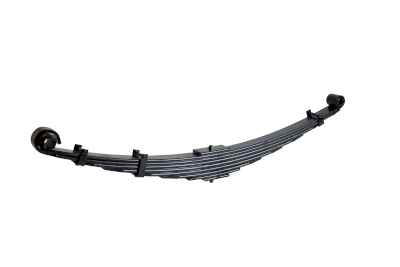What Is a Flat Spring?

A flat spring is a spring material in the form of a thin plate. It is used to push or pull a plate material within its elastic range, and the main materials used are iron, steel, stainless steel, and copper. Various bending strengths can be produced by using not only the material but also the plate thickness and shape, and by changing the bending process and dimensions according to the application.
Types of flat springs include not only thin plate springs consisting of only one plate, but also stacked plate springs consisting of several plates. A circular flat spring is also a type of flat spring, and a spiral spring such as a spring is also classified as a flat spring.
Uses of Flat Springs
Flat springs are used in a wide range of applications, including industrial equipment, automobiles, aircraft, space satellites, medical equipment, construction hardware, and toys, and thus play an important role in our daily lives.
Flat springs have three main uses: as shock absorbers using elasticity, for restoration using restorative force, and for fastening, using elasticity to hold objects in place. In addition to these, they are sometimes used as electrical contacts utilizing the conductivity of metals.
Principles of Flat Springs
Flat springs are thin sheets of metal or other material that are used to apply a load within their elastic range. They can be formed by laser cutting, cutting with a turret puncher, or bending with a press brake. Therefore, unlike coil springs, there are fewer restrictions on the shape and size, and it is possible to create a product that matches the application and the location of use.
The stress and amount of deflection when a load is applied to flat springs can be calculated. Therefore, in order to use and shape flat springs in appropriate locations, allowable stress and deformation must be calculated at the time of design. However, the more complex the shape of flat springs are, the more its characteristics are likely to change depending on the shape, fixing method, and direction of load application, and the larger the potential error in the calculation results on the table becomes. Flat springs with complex shapes require not only simulation by calculation but also quality evaluation on prototypes. However, since some flat springs are an important part that often cannot be manufactured cost-effectively, it is desirable to use similarly shaped flat springs for parts that can be used, and it is important to accumulate accurate design data before production.